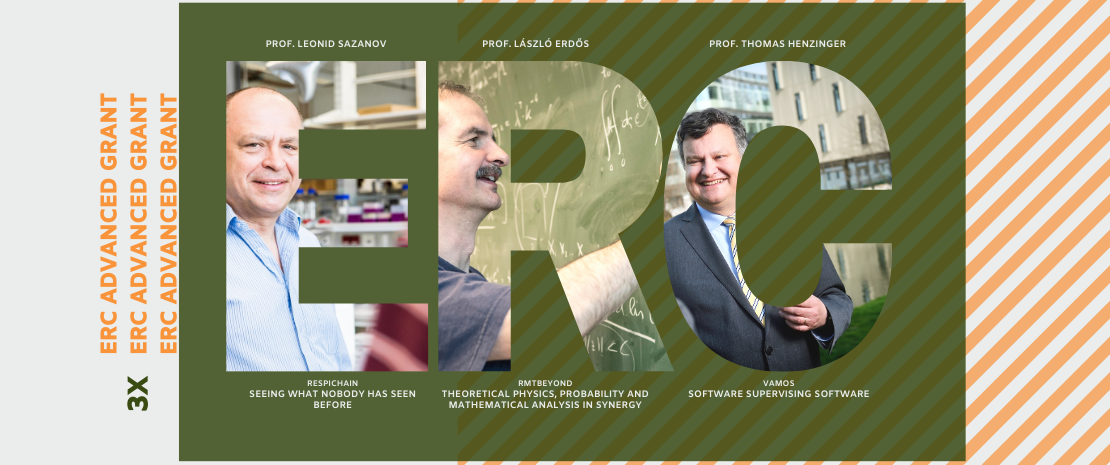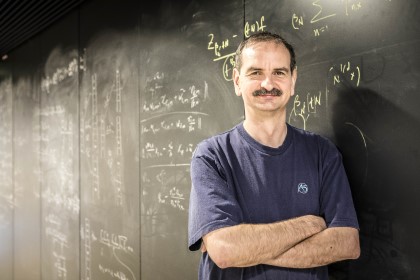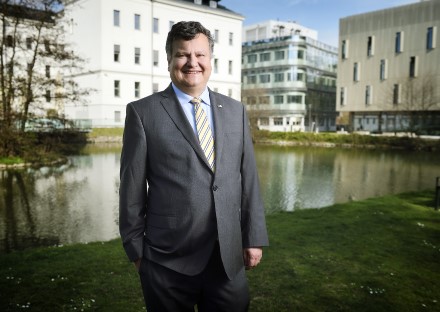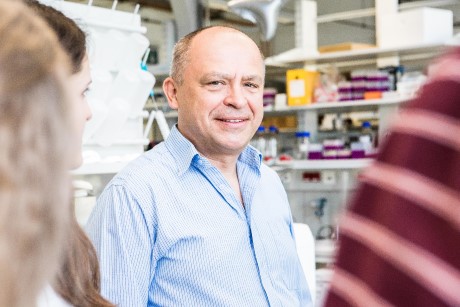April 22, 2021
A beacon of scientific success
Three scientists from IST Austria receive European Research Council grants, securing over 6 million Euro funding.

In a highly competitive funding season (42% more applications compared to the previous year), the European Research Council awarded three of the most prestigious grants to the Institute of Science and Technology Austria. Professors Leonid Sazanov, László Erdős, and Thomas Henzinger each received an advanced grant, which represents truly groundbreaking research.
For professors Erdös and Henzinger, this is already the second time to receive these prestigious grants. Currently, IST Austria is the world leader regarding successful ERC grant applications. These are the three ERC awarded research projects:
Theoretical physics, probability and mathematical analysis in synergy
László Erdős and his team took up the challenge to mathematically work out a pioneering idea of Nobel prize winner Eugene Wigner from the 1950s. “We want to discover how to extend E. Wigner’s random matrix theory to more realistic physical models with/without natural symmetries,” describes László Erdős. By analyzing random matrices and statistics of their eigenvalues, one can retrieve information about the energy levels of the original physical systems described by first principle quantum mechanics.
For László Erdős, the combination of various schools of thought is fascinating: “This project involves a synergy of visions from theoretical physics, inspirations from probability theory, and techniques of hard mathematical analysis.” With the ERC grant, the group will extend the current random matrix theory to novel regimes and develop mathematical tools to tackle several key problems, such as scattering theory of quantum dots and nanowires.

Software supervising software
As everybody knows, much software does not perform to the same high standards of quality we have come to expect from other engineering products. The rate of improvement in quality assurance techniques for software lags behind the rate at which software complexity grows. This is ever more apparent in a time of artificial intelligence, cloud computing, and cyber-physical systems such as computer-assisted driving. With the new ERC Advanced Grant, Thomas Henzinger and his group at IST Austria will develop theoretical foundations for the Vigilant Algorithmic Monitoring Of Software (VAMOS). “We are engineers. We hope to develop methods for making the world’s software safer and fairer,” explains Thomas Henzinger.
The idea is to have critical software watched over by other software developed independently to identify potential vulnerabilities, errors, and unfair decisions as early as possible while the monitored software is executing. VAMOS is enabled by the increasing availability of hardware resources, from multicore processors to data centers, and will make our software infrastructure more robust, dependable, and trustworthy. For Thomas Henzinger, the most gratifying aspect of computer science is that even the most theoretical research can have an immediate practical impact: “Beautiful theory translates directly into a safer environment, for example, in the form of software-assisted cars or medical devices.”

Seeing what nobody has seen before
Humans, animals, and fungi would not be alive if it wasn’t for the mitochondria, the structures which produce energy for their cells. “I hope that we will be able to discover the basic underlying principles of these machines, which may be applicable in wider biology,” explains Leonid Sazanov. His ambitious goal is to reveal the mystery of mitochondrial energy transfer.
The funded research project will investigate the least understood membrane protein complexes in the biochemical chain of respiration. To uncover the structures and workings of these molecular “machines,” the group will employ cryogenic electron microscopy, high-resolution microscopy, at very low temperatures below -150°C. Leonid Sazanov says, “When you see the architecture of a new protein, and you know that you are the first in the world to see it – this is the most fascinating part of any structural biology project.” Novel time-resolved microscopy methods will be developed and applied. The solution could solve central questions in biology and illuminate pathways to conquer mitochondrial diseases.

ERC at IST Austria
For science, awards and honors are given only to the best of the best. Therefore, these distinctions are also critical metrics to IST Austria and its supporters, Lower Austria and Austria, for measuring the quality of the conducted research.
Currently, the 65 professors at IST Austria hold a combined amount of 39 ERC grants, showcasing how curiosity-driven research without constraints or predefined research topics supported by the state-of-the-art infrastructure can lead to exceptional results.



